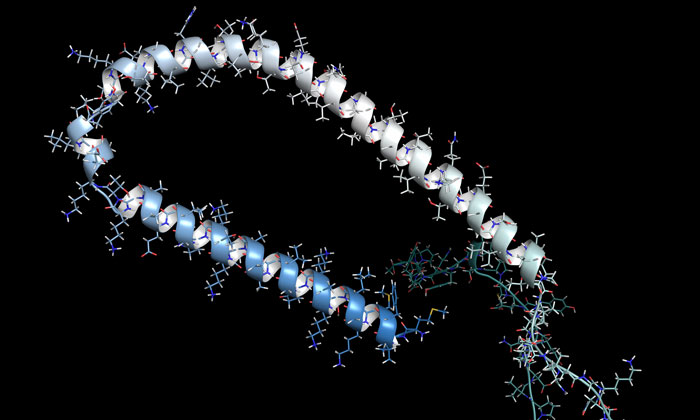New insights into alpha-synuclein function holds promise for Parkinson’s treatment
Posted: 19 February 2018 | Drug Target Review | 2 comments
Researchers have gained important insights into the role of alpha-synuclein – the protein associated with Parkinson’s disease – in nerve cells and how calcium affects its function. This knowledge is hoped to better arm scientists regarding future treatment for the disease.


The international team of scientists, led by the University of Cambridge, found that calcium can mediate the interaction between small membranous structures inside nerve endings (which are important for neuronal signalling in the brain) and alpha-synuclein, the protein associated with Parkinson’s disease. Excess levels of either calcium or alpha-synuclein may be what starts the chain reaction that leads to the death of brain cells.
The findings represent another step towards understanding how and why people develop Parkinson’s. According to the charity Parkinson’s UK, one in every 350 adults in the UK – an estimated 145,000 in all – currently has the condition, which is currently incurable.
Parkinson’s disease is one of several neurodegenerative diseases that result from naturally occurring proteins folding into the wrong shape and fusing with other proteins that eventually form thin filament-like structures called amyloid fibrils. These amyloid deposits of aggregated alpha-synuclein, also known as Lewy bodies, are the sign of Parkinson’s disease.
Alpha-synuclein flies under the radar
Until now it has been unclear what alpha-synuclein actually does in the cell: why it’s there and what it’s function is. It’s implication in various processes – such as the smooth flow of chemical signals in the brain and the movement of molecules in and out of nerve endings – has been known, but exactly how it behaves was unclear.
Explaining the reason for this, Dr Gabriele Kaminski Schierle from Cambridge’s Department of Chemical Engineering and Biotechnology, said: “Alpha-synuclein is a very small protein with very little structure, and it needs to interact with other proteins or structures in order to become functional, which has made it difficult to study.”
However, the advent of super-resolution microscopy techniques has now enabled scientists to look inside cells to observe the behaviour of alpha-synuclein. To do so, Schierle and her colleagues isolated synaptic vesicles – part of the nerve cells that store the neurotransmitters that send signals from one nerve cell to another.
In nerve cells, calcium plays a role in the release of neurotransmitters. The researchers observed that when calcium levels in the nerve cell increase, such as upon neuronal signalling, the alpha-synuclein binds to synaptic vesicles at multiple points causing the vesicles to join. This may indicate that the normal role of alpha-synuclein is to help the chemical transmission of information across nerve cells.
“This is the first time we’ve seen that calcium influences the way alpha-synuclein interacts with synaptic vesicles,” said Dr Janin Lautenschläger, University of Cambridge. “We think that alpha-synuclein is almost like a calcium sensor. In the presence of calcium, it changes its structure and how it interacts with its environment, which is likely very important for its normal function.”
“There is a fine balance of calcium and alpha-synuclein in the cell, and when there is too much of one or the other, the balance is tipped and aggregation begins, leading to Parkinson’s disease,” said Dr Amberley Stephens.
The imbalance can be caused by a number of factors, such as a genetic doubling of the amount of alpha-synuclein (gene duplication), by an age-related slowing of the breakdown of excess protein, by an increased level of calcium in neurons that are sensitive to Parkinson’s, or an associated lack of calcium buffering capacity in these neurons.
Understanding the role of alpha-synuclein in physiological or pathological processes may aid the development of new treatments for Parkinson’s disease. One possibility is that drug candidates developed to block calcium – for use in heart disease, for instance – might also have potential against Parkinson’s disease.
Related topics
Analysis, Disease Research, Microscopy, Molecular Biology, Protein
Related conditions
Parkinson's disease
Related organisations
University of Cambridge
Related people
Dr Amberley Stephens, Dr Gabriele Kaminski Schierle, Dr Janin Lautenschläger









I believe that Parkinson’s and Tourettes Syndrome are kin, in that they are both involuntary muscle movement disorders. It is my understanding that the suppliment serrapeptase, breaks down the alpha synuclein protein, which from what I’ve read causes the involuntary movements. So I am now taking serrapeptase and am hopeful that my tics will lessen every passing month.
It could happen!
Any luck with the serrapeptase? Have you noticed any other things happening like scar tissue from old wounds breaking down etc, lower blood pressure?